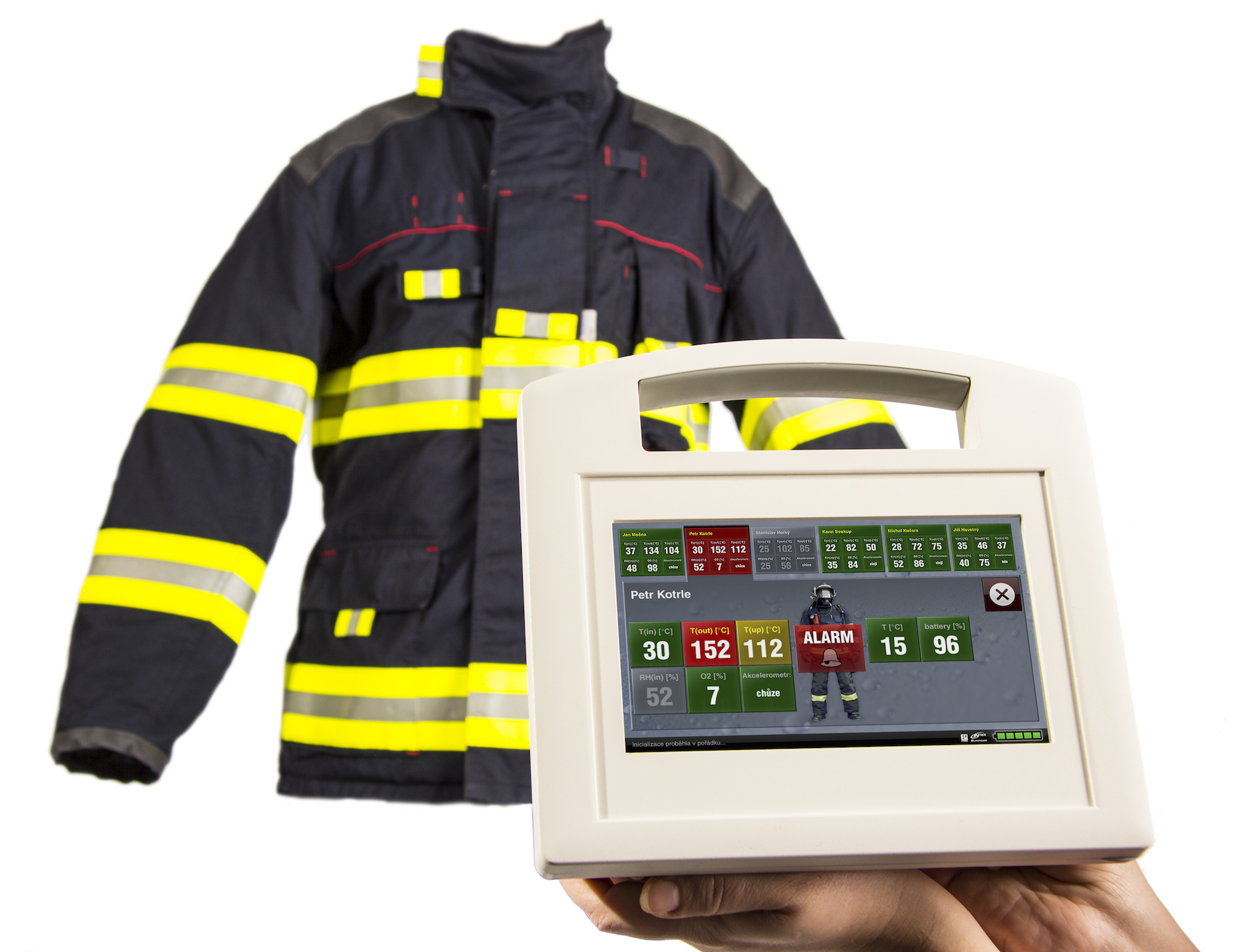

EURIPIDES INTEX

European partnership creates intelligent jacket for firemen filled with innovative tech.
A smart jacket developed during the Czech-led research project EURIPIDES INTEX could soon help firefighters stay safer on the job and be on the market by 2016.
EUROPEAN RENAISSANCE
 "Smart clothes like vests have been developed for military uses in the past. But all emergency workers also need real-time information to help them stay alive," said Dr Radek Soukup, of the University of West Bohemia in Pilsen, in the Czech Republic, who worked on the project. Fire crews in the Czech towns Pilsen and Zbiroh told the partners what they wanted from their high-tech jacket.
"Smart clothes like vests have been developed for military uses in the past. But all emergency workers also need real-time information to help them stay alive," said Dr Radek Soukup, of the University of West Bohemia in Pilsen, in the Czech Republic, who worked on the project. Fire crews in the Czech towns Pilsen and Zbiroh told the partners what they wanted from their high-tech jacket.
Countries involved: Czech Republic, France, Germany, Switzerland
Cost: EUR 3 million
Duration: 48 months
European equipment suppliers benefit from smart analysis methods for 3D integration in advanced m... > DETAILS
BECAUSE TIME IS PRECIOUS
In the framework of EURIPIDES², a Franco-Swiss partnership has devel...
> DETAILSSatellites to battle the digital divide
A Franco-Finnish consortium developed a new generatio...
> DETAILSUPMOST partners win the EUREKA award 2017!
Amplitudes Systemes and Alphanov (France) and HPK ...
> DETAILSSATELLITE COMMUNICATIONS FOR TOMORROW'S PLANES
French electronics group Thales headed a Europ...
> DETAILS
NAVAL NAVIGATION REVOLUTIONISED BY SOLID-STATE COMPASS
A team of engineers from French an...
> DETAILS
European partnership creates intelligent jacket for firemen filled with innovative tech.
A s...
PACKING POWER
French, Spanish and Polish partners developed a small unit that can grab and s...

